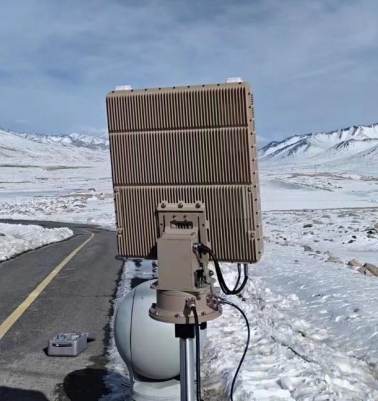The detection range of anti - UAV radar is influenced by several key factors that are crucial for understanding its performance and capabilities.
1. Radar System Attributes
Transmit Power: The strength of the radar's transmit power directly impacts its detection range. A higher - power radar system can send out stronger electromagnetic waves, which are less prone to attenuation over long distances. This allows the radar to effectively detect UAVs from farther away, providing an extended surveillance perimeter.

Antenna Design and Performance: Our advanced antenna designs play a vital role. High - gain antennas are engineered to focus the radar signal in a specific direction, maximizing signal strength and minimizing dispersion. Narrow - beamwidth antennas enhance the radar's directivity, enabling it to accurately target and detect UAVs at greater distances with higher precision.
Signal Processing Technology: Our cutting - edge signal processing algorithms are the heart of our radar systems. These algorithms are designed to filter out noise and interference, extracting even the weakest target signals. By improving the signal - to - noise ratio, we can detect UAVs that are far from the radar site, ensuring comprehensive coverage of the airspace.
2. Target - Related Factors
UAV Size and Shape: Larger UAVs typically have a greater radar cross - section (RCS), reflecting more of the radar's electromagnetic waves. This makes them easier to detect from a distance. In contrast, smaller UAVs, such as micro - drones, have a smaller RCS, requiring more sensitive radar systems to detect them at the same range.
Material and Surface Composition: UAVs made from certain materials or with specific surface coatings can either absorb or reflect radar waves differently. UAVs with stealth - like materials that absorb radar energy reduce the reflected signal, potentially shortening the detection range. Conversely, metallic or highly reflective surfaces increase the likelihood of detection over longer distances.
Flight Attitude: The orientation of a UAV during flight affects its RCS. When a UAV presents its larger surface area to the radar, it is more easily detected. However, if it is flying at an angle that exposes a smaller surface, the detection range may be reduced.
3. Environmental Conditions
Atmospheric Conditions: The atmosphere can significantly impact radar signal propagation. Moisture, dust, and gas molecules in the air can absorb, scatter, or refract radar waves. In adverse weather conditions such as heavy rain, fog, or sandstorms, signal attenuation increases, potentially reducing the effective detection range.
Clutter and Interference: Natural and man - made clutter, such as terrain features, buildings, and other electronic devices, can interfere with radar signals. Ground clutter from hills, forests, or urban areas can mask UAV signals, making it more challenging to detect them, especially at longer ranges. Similarly, electromagnetic interference from other radio - frequency sources can disrupt the radar's operation.
Topography: The physical landscape around the radar installation can block or reflect radar waves. Mountains, tall buildings, and other large obstacles can create "blind spots" where UAVs may go undetected. Understanding and compensating for the local topography is essential for optimizing the radar's detection range.
4. Frequency of Operation
Different radar frequencies have distinct propagation characteristics. Lower - frequency radars, such as those in the UHF and VHF bands, generally have longer - range capabilities as they experience less attenuation in the atmosphere and can diffract around obstacles. However, they offer lower resolution. Higher - frequency radars, like X - band and Ku - band, provide higher resolution but have a shorter detection range due to greater atmospheric absorption and scattering. Our radar systems are carefully engineered to select the most appropriate frequency bands for optimal performance across a wide range of operational scenarios.
Mskyeye can provide users with radars for drone detection at distances of 5 kilometers, 8 kilometers and 10 kilometers. Welcome to inquire!
MB:+86-18056861209

